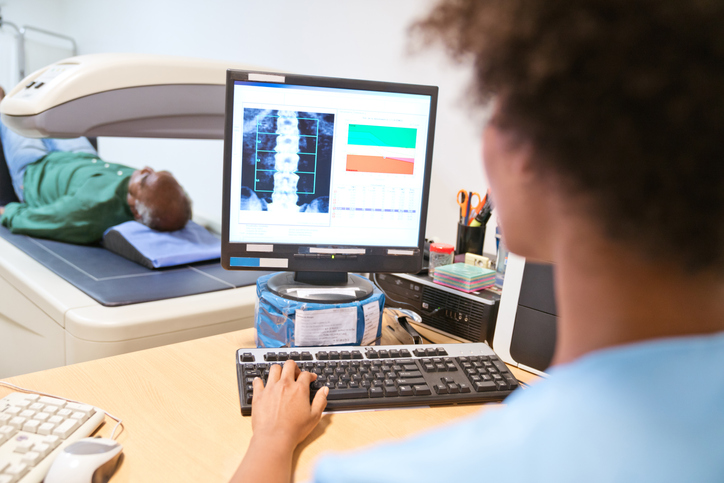
If your doctor suspects that you might have osteoporosis, you’ll probably be sent for a bone density scan also known as a DEXA scan. Osteoporosis occurs when your bones become thin and weak because they’re lacking in calcium and other important minerals. Osteoporosis, when treated by your physician, can significantly lower your risk of serious fractures. To help evaluate whether or not you have osteoporosis, your physician may recommend a bone density test (DEXA scan) to measure the strength of your bones and your risk of fracture.
- Several different factors might lead a doctor to recommend a bone density scan. Doctors use these scans to identify a decrease in bone density before any bones actually break, and determine whether or not you’re at risk for fractures. Osteoporosis is most common in post-menopausal women, but people of any gender and age can be affected by it. Therefore, regardless of your age or sex, your doctor may recommend a bone density scan if you have:
- Lost at least 1.6 inches in height.
- Broken a bone with only mild trauma.
- Taken certain drugs, like steroids.
- Received an organ or bone marrow transplant.
- Had a drop in hormone levels, whether it’s due to the natural aging process or because of cancer treatments.
- The scan is easy, quick and painless, and doesn’t require much preparation. You’ll need to tell the doctor if you’ve had any tests with contrast, because that can interfere with your bone density test, and you’ll also need to avoid calcium supplements for at least 24 hours before your bone density test. Wear loose, comfortable clothing, avoiding any clothes with belts, zippers, or buttons, and removing all metal objects from your pockets. The test only takes 20-30 minutes, during which time you’ll lie on a padded platform while a mechanical arm passes over your body. A bone density test doesn’t expose you to very much radiation; it’s less than the amount emitted during a chest x-ray.
- Understanding the results of the scan is a little bit tricky. The higher your bone mineral content, the denser your bones are, and the less likely they are to break. The results are reported in two numbers: the T-score and the Z-score.
- The T-score compares your bone density with the bone density expected in a healthy young adult of your same gender. It’s expressed in numbers that represent how far above or below average your bone density is. A score of -1 or above is normal, while a score between -1 and -2.5 is indicative of osteopenia. Osteopenia is a condition that involves low bone density, and it can lead to osteoporosis if left untreated. If your result is below -2.5 you likely already have osteoporosis.
- The Z-score indicates your deviation above or below what’s expected for someone of your age, sex, weight, and racial or ethnic origin. If this score is much higher or lower than the average expected number, something other than aging may be responsible for your abnormal bone loss. In this case, the doctor will attempt to identify the underlying problem, so that the condition can be treated. The right treatment can slow or even stop bone loss.
If you need a bone density scan, contact Salem Radiology. Established in 1974, we are the largest radiology group in the area and offer a depth of specialization among our doctors that you would expect to find only at major university medical centers. To learn more or schedule an appointment, call (503) 399-1262 or contact us through our website
